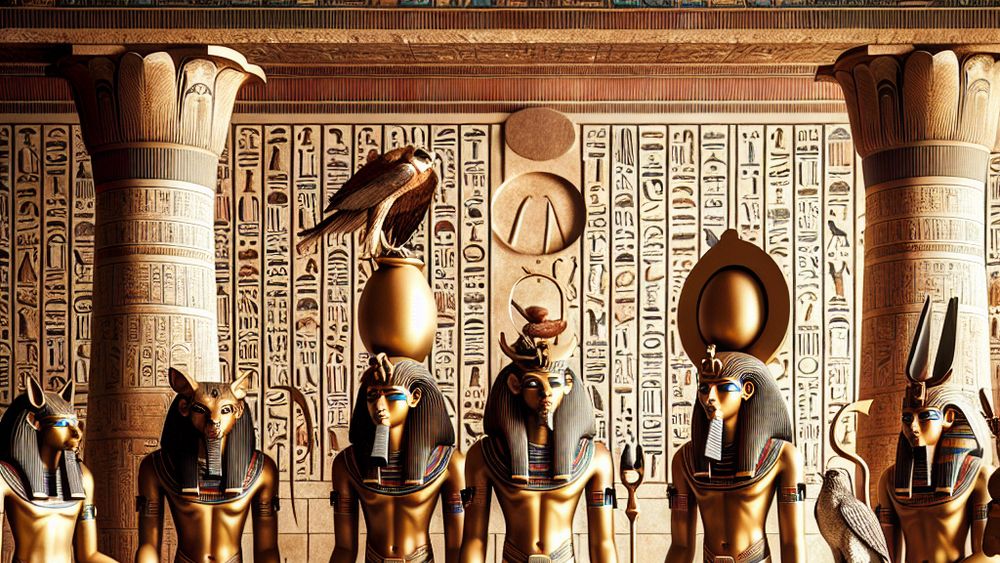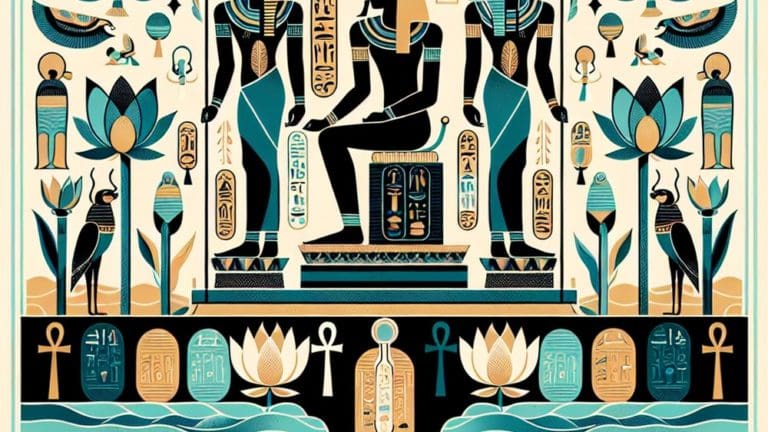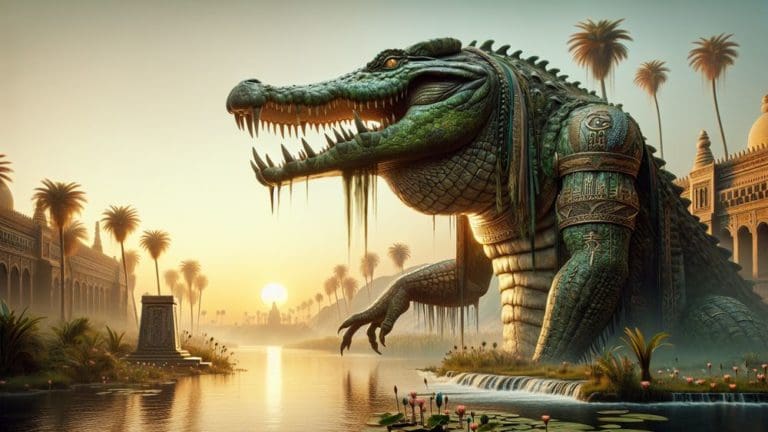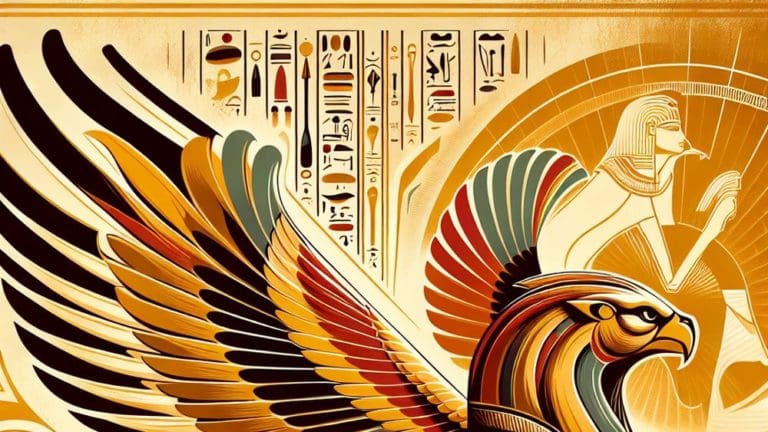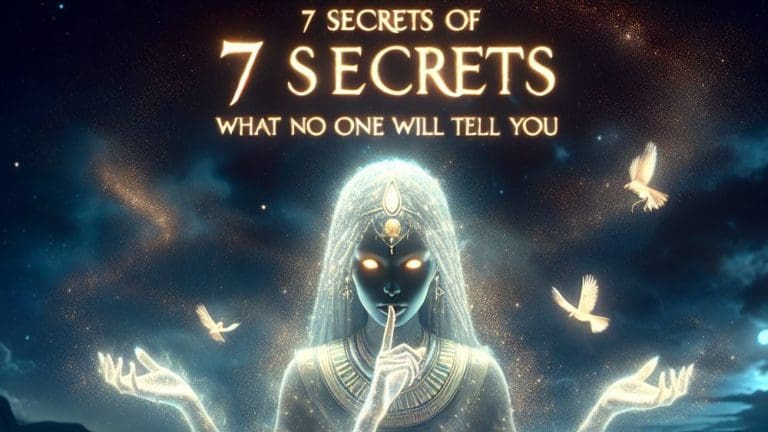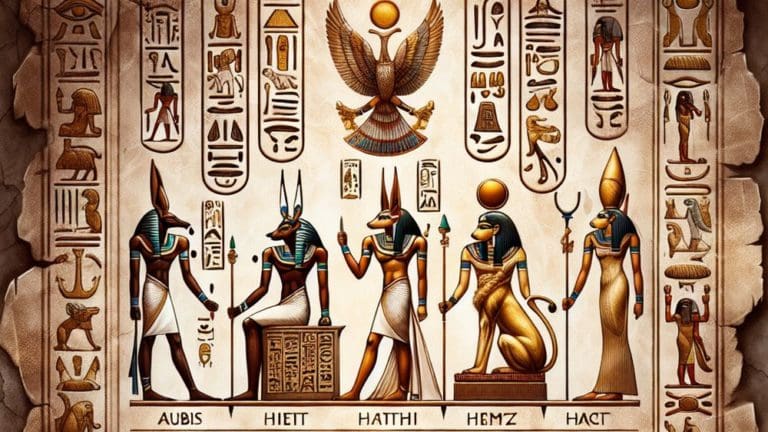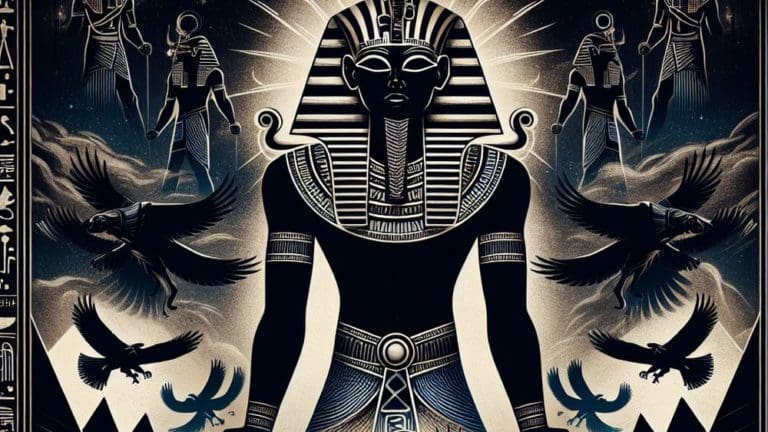Egyptian Hunting Deities: Complete List For Enthusiasts
Egyptian Hunting Deities: Complete List For Enthusiasts
Have you ever wandered through the sands of time, imagining the rich and mysterious lives of ancient civilizations? Among these, the Egyptians stand tall with their remarkable contributions to history, culture, and religion. The allure of their pantheon, especially the list of Egyptian hunting deities, beckons to both the curious mind and the ardent history enthusiast.
Key Points:
- Egyptian hunting deities played a vital role in ancient Egyptian culture and were revered for guiding and protecting hunters.
- Hunting in ancient Egypt symbolized royalty, religious practice, a source of food, and a test of skill.
- The connection between hunting deities and pharaohs showcased a profound relationship between the spiritual and temporal worlds.
- Key Egyptian hunting deities included Pakhet, Neith, Wepwawet, Sekhmet, and Anhur, each with unique attributes and significance.
- Symbols and attributes of Egyptian hunting deities held deep religious meaning, bridging the gap between the divine and earthly realms.
- Sacred animals like lions, wolves, and falcons were revered by the Egyptians as representations of divine power and protection.
- Egyptian hunting deities were honored through rituals, offerings, and temples, reflecting the importance of hunting in ancient Egyptian society.
Their gods and goddesses were not just figures of worship but integral characters in the everyday lives of the Egyptians. They influenced everything from the annual flooding of the Nile to the success of a hunt, weaving an intricate fabric of divinity throughout the very essence of ancient Egyptian life. Let’s embark on this enthralling journey together, unraveling the mysteries that these powerful deities hold.
The Role of Hunting Deities in Ancient Egyptian Culture
Hunting was more than a mundane task; it was a vital activity that intertwined with religious beliefs, providing sustenance, and demonstrating prowess. The hunting deities were revered, serving as patrons of this essential aspect of Egyptian society, guiding and protecting their followers.
Significance of Hunting in Ancient Egypt
In ancient Egypt, hunting was not only about survival; it was a crucial component of Egyptian society and religion. This activity had several significant aspects:
- Symbol of royalty and nobility: Hunting was often associated with the pharaoh and the elite, symbolizing power and dominance.
- Religious practice: It was deeply intertwined with religious rituals, offering a way to please and communicate with the gods.
- Source of food: Hunting provided essential proteins through game meat.
- Skill and sport: It was also seen as a sport that tested the skill, courage, and prowess of the hunter.
These elements highlight hunting’s multifaceted role, deeply embedded in the fabric of Egyptian culture.
Hunting in ancient Egypt symbolized power, played a role in religious rituals, provided food, and tested a hunter’s skill, showing its multifaceted significance in Egyptian culture.
The Connection Between Hunting Deities and Pharaohs
The divine bond between hunting deities and pharaohs was profound, offering an intriguing glimpse into the spiritual and temporal worlds of ancient Egypt. This relationship can be seen through several key connections:

- Pharaohs as divine representatives on Earth: Pharaohs were considered earthly embodiments of the gods, and hunting allowed them to demonstrate their divinity and strength.
- Deities as protectors and guides: Hunting deities were invoked for protection and success in hunts, symbolizing a direct divine influence in everyday activities.
- Hunting rituals and offerings: Hunting expeditions often included rituals to honor and please these gods, further cementing their importance in maintaining cosmic balance.
This intricate relationship underscores the central role of hunting deities in guiding and protecting both the lands and its leaders.
Key Egyptian Hunting Deities
The pantheon of Egyptian deities is vast and diverse, with several gods and goddesses overseeing the act of hunting. Each holds unique attributes and significance, offering protection, strength, and skill to those venturing into the wilds. Let’s delve into the enigmatic world of these divine beings.
Pakhet – The Fierce Lioness Goddess
Pakhet, known as the “She Who Scratches,” is a testament to the duality of protection and ferocity. Characterized by:
- Domain: Predominantly worshiped in Middle Egypt, her influence spanned across the realm as a guardian of the night and protector of hunters.
- Attributes: With the body of a woman and the head of a lioness, she symbolized the ultimate huntress: fierce, protective, and precise in her strike.
Pakhet’s enigmatic presence underscores the respect and awe that ancient Egyptians held for the forces of nature and the divine.
Pakhet embodies the duality of protection and ferocity as a guardian of the night and protector of hunters, symbolizing the ultimate huntress with her fierce and precise nature.
Neith – The War and Hunting Goddess
Neith, an ancient goddess of hunting and war, represented the convergence of strength, strategy, and the cycle of life and death. Her attributes include:
- Dual roles: As a goddess of war and hunting, Neith was a protector of the Pharaoh and the people, embodying the principles of fierceness and nurturing.
- Symbols: Often depicted with a shield and arrows, she signified readiness for both protection and sustenance through hunting.
Neith’s legacy as a versatile deity illustrates the complex relationship between survival, spirituality, and society in ancient Egyptian culture.
Wepwawet – The Opener of the Ways
Wepwawet, often depicted as a wolf or a man with a wolf’s head, played a critical role in Egyptian mythology as the deity who opened the way for the sun god, the deceased’s souls, and the armies of Egypt. He was a symbol of guidance and protection, guiding both the living and the dead towards uncharted territories.
In the time when hunting was not only a way of life but a means of survival and significance, Wepwawet’s role extended to being a patron of hunters, ensuring their paths were cleared of dangers and their hunts successful. His attributes highlight the vital connection between mankind and the natural world, emphasizing the importance of harmony and respect in the ancient Egyptian way of life.
- Guidance: Paving the way for souls and armies.
- Protection: Watching over hunters and the deceased.
- Harmony: Encouraging balance with nature.
Paving the way for souls and armies.
Sekhmet – The Powerful Warrior Goddess
Sekhmet, often depicted as a lioness, the most powerful hunter known to the Egyptians, was revered as a warrior goddess and protector of the Pharaohs. Her name, meaning “the powerful one”, reflects her fierce and daunting persona, capable of destroying Egypt’s enemies with fire.
Her role was not limited to warfare and destruction. Sekhmet was also known for her healing abilities, showcasing the dual nature of life and death, creation and destruction. The Egyptians revered her as a complex deity who could bring both devastation and disease or heal and protect the land, depending on her mood.
- War: Protector of Pharaohs and destroyer of enemies.
- Healing: Possessor of healing capabilities.
- Dual nature: Representative of both destruction and protection.
Anhur – The Slayer of Enemies
Anhur, known as the slayer of enemies, was a deity associated with war and the hunt, embodying the very spirit of victory and aggressiveness required in battle. As a warrior god, Anhur was praised for his bravery and strength, attributes that made him a patron for soldiers and hunters alike.

His iconography, showing him as a man wearing a robe with a lion’s head or carrying a spear, underscores his martial prowess and his role as a protector of Egypt from its enemies. He was also associated with the more peaceful aspect of overseeing the creation of new lands and territories, portraying him as a guiding force for both warriors and explorers in unventured realms.
In a society where the success of the hunt or the victory in war could determine the fate of the people, Anhur’s worshippers sought his favor to ensure triumph in these vital endeavors. His worship directly influenced the morale and spirit of the Egyptian soldiers, instilling in them a sense of invincibility and divine support.
- War and victory: Embodiment of success in battles.
- Protection: Defender against Egypt’s enemies.
- Guidance: Patron of soldiers and hunters.
Anhur embodies success in battles, defends against enemies, and provides guidance as a patron of soldiers and hunters.
Symbols and Attributes of Egyptian Hunting Deities
In a realm where the physical and spiritual worlds intertwined, the symbols and attributes of the Egyptian hunting deities held profound meaning. These iconic representations were not merely artistic expressions but were imbued with deep religious significance, acting as a bridge between the gods and the people.
Common Symbols Associated with Hunting Deities
Looking into the rich tapestry of Egyptian mythology, we find that each hunting deity was represented by distinct symbols and attributes that captured their essence and role within the pantheon. Here is a snapshot:
| Deity | Common Symbols | Attributes |
|---|---|---|
| Pakhet | Lioness | Strength, ferocity |
| Neith | Shield and arrows | Protector, hunter |
| Wepwawet | Wolf | Guidance, path-opener |
| Sekhmet | Lioness, solar disk | Power, healing |
| Anhur | Spear | Victory, war |
These symbols were omnipresent in temples, tombs, and manuscripts, serving as reminders of the deities’ powers and blessings, fostering a connection between the ethereal and the earthly realm.
Weapons and Tools of Power
The Egyptian hunting deities were often depicted with weapons and tools that not only symbolized their dominion over war and the hunt but also conveyed their ability to protect and guide their followers. Among these divine accouterments were:
- Spears and bows: Essential for hunting and battle prowess.
- Shields: Symbolizing protection.
- Knives: Used in rituals and as a symbol of power.
- Staffs: Representing authority and guidance.
These instruments of power were not only symbolic but were believed to carry the essence of the deities themselves, granting protection and success in endeavors of war and hunt.
The divine accouterments of the Egyptian hunting deities symbolized protection, power, authority, and guidance, granting success and protection to their followers.
Animals Sacred to Hunting Gods and Goddesses
At the heart of the relationship between the Egyptians and their deities were the sacred animals that embodied the characteristics of each hunting goddess and god. These creatures were revered, worshipped, and at times feared, for they were the living representations of divine power and protection:
- Lions and lionesses: Epitomizing strength, power, and protection (Sekhmet, Pakhet).
- Wolves: Symbolizing guidance and the path to the afterlife (Wepwawet).
- Falcon: Representing victory and rulership (Anhur).
These sacred animals played a pivotal role in the Egyptian understanding of the natural world and its connection to the divine, showcasing the harmony between man and the creatures that shared their earth.

FAQs
1. Who was the most feared Egyptian hunting deity?
The most feared Egyptian hunting deity was Sekhmet, known for her fierce nature. She was a goddess who embodied the wrath of the sun god, capable of unleashing disease and healing it, making her both feared and revered.
2. How did ancient Egyptians honor their hunting deities?
Ancient Egyptians honored their hunting deities through various rituals and offerings, including animal sacrifices and dedications of hunt spoils. These acts were meant to appease the gods, securing their favor and protection in both life and afterlife pursuits.
3. Are there any temples dedicated to Egyptian hunting deities?
Yes, there are temples dedicated to Egyptian hunting deities. For example, the temple of Pakhet, known as Speos Artemidos, carved into the rocky cliffs of Beni Hasan, serves as a testament to the ancient Egyptians’ reverence for their hunting goddess.
4. How do Egyptian hunting deities compare to those in other ancient cultures?
Egyptian hunting deities, with their rich mythologies and deep connections to the natural and supernatural worlds, share similarities with their counterparts in other cultures, such as the Greek Artemis or the Celtic Cernunnos, underscoring the universal significance of hunting deities across civilizations.
Conclusion
Exploring the list of Egyptian hunting deities opens up a mesmerizing world that blends mythology, religion, and ancient practices. Through vivid storytelling and archaeological evidence, we gain insights into how the ancient Egyptians perceived the natural world, the hunt, and the divine forces that govern them. This exploration is not just about uncovering the past; it’s about connecting with the timeless human fascination with the mysteries and wonders of life. As we continue to dive deeper into these ancient mysteries, we carry forward the legacy of those who revered the earth and its creatures, paying homage to their wisdom and spirituality. I invite you to join me on this continuous journey of discovery, sharing your thoughts, experiences, and perhaps even unearthing new secrets along the way. Thank you for walking with me through the shadows of time, and may we always remain curious, humble, and eager for the adventures that lie ahead. Farewell, fellow explorers, until our paths cross again.
Sincerely,
Cedric

